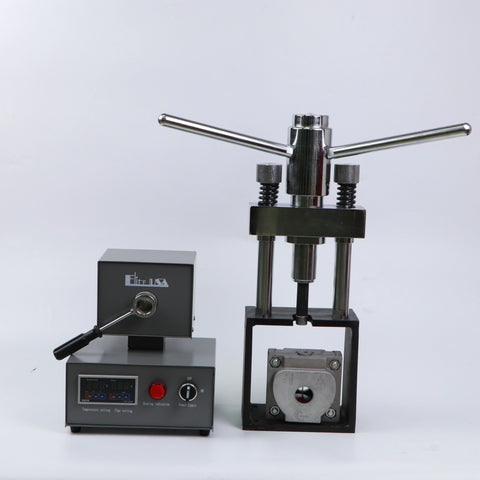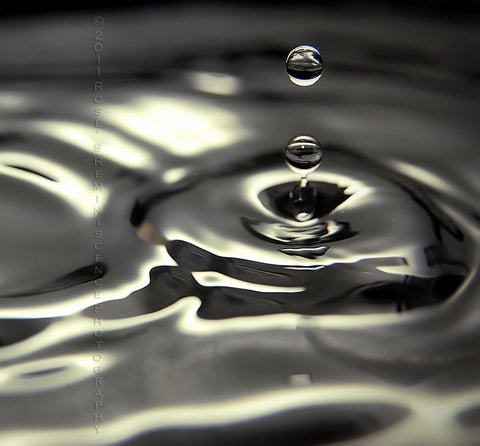Ceramic and metal slurries "feedstock" for Ceramic & Metal Injection Molding CIM & MIM and additive manufacturing of technical ceramics and metals
The injection of Ceramic and Metal Injection Molding CIM and MIM binder slurries (ceramic and metal feedstocks) in 3D printed durable and/or sacrificial molds (or printed by high temperature ceramic and metal jetting) has unique benefits in comparison to direct printing of highly loaded 3D photopolymer resins with ceramic and metal powders, to say:
- full range of technical ceramic and metal slurries can be injected using CIM and MIM feedstocks in 3D printed molds with low cost printers
- higher sintering density, lower microporosity vs metal Selective Laser Sintering SLS and direct printing by SLA or jetting of 3D resins highly loaded with ceramic and metal powders
- less productive limitations, much faster and ecological debinding without solvents, with water for faster debinding and sintering times without limitation of thickness vs. ceramic and metal printing by SLA and jetting
- increased isotropy vs metal Selective Laser Sintering SLS and direct printing of ceramics and metals by SLA and jetting
- lower costs since our soluble 3D resins allow the printing of sacrificial or durable molds with affordable SLA, DLP and LCD printers with prices ranging from 200 to 2000 Euros and with traditional injection molding machines and traditional ceramic and metal feedstocks


Our ceramic and metal powder slurries contain eco friendly binders and can be injected in 3D printed molds made with our durable and/or sacrifical 3D resins, and can also be custom designed for direct printing systems such as jetting at high temperature:
- excellent dispersion and injection flow of micron and submicron ceramics with additions up to 65% volumen concentrations
- very high resolution
- high quality
- controlled and reproducible process shrinkage
- minimum expansion coefficient and wide temperature interval of debinding to prevent micro-fractures
- very high resolution of 20 microns of final products
- environmentally friendly materials and debinding
- partially water soluble for microcraking prevention
Ceramic and metal slurries can be supplied as solids at room temperature in metal cartridges of 25 mm external diameter for direct injection in low cost manual injection machines such as this type of manual injection equipment:


3Dresyns ceramic and metal slurrries use combinations of eco friendly solid binders at room temperature, which become liquids with excellent flow at injection temperature. They are partially water soluble to facilitate de debinding in water, by creating micropores for defect free debinding, followed by thermal debinding (two step debinding) and sintering . The insoluble binder portion helps to retain the shape during the whole debinding process.
Types of custom designed ceramic and metal slurries:
- Ceramic Slurry CS Al2O3 Alumina
- Ceramic Slurry CS ZrO2 Zirconia
- Ceramic Slurry CS YSZ Yttria stabilized zirconia
- Ceramic Slurry CS SiC/SiSiC Silicon carbide
- Ceramic Slurry CS Si3N4 Silicon nitride
- Ceramic Slurry CS HA Hydroxy Apatite
- Metal Slurry MS 316L Stainless Steel
- Metal Slurry MS Ti Titanium
- Metal Slurry MS W-Mo alloy Wolfram(Tungsten) Molybdenum
- Metal Slurry MS Co-Cr alloyCobalt Chrome
We can custom design and supply ceramic slurrries of alumina, zirconia, SiC/SiSiC, Si3N4, hydroxy apatite, and metal slurries of stainless steel, titanium, Wo-Mo, Co-Cr, etc.
Discover our ready to inject, debind, and sinter:
Do you want to produce exotic 3D materials? including nanopowders, nanoparticles, nanofibers, micron / micronized powders, microfibers, etc? with specific shapes and sizes to meet your specifications? We can custom design and make them ready to inject in cartridges.
Discover our porfolio of nano and micron materials which can be supplied as "solids slurries" in cartridges ready to inject with economical manual injection equipment.
Typical Properties of Technical Ceramics
|
Material |
Properties and Benefits |
Main Applications |
|
Alumina Al2O3 |
High hardness and mechanical strength under compressive loading, excellent thermal stability, wear resistance, low electrical conductivity ( high frequency electrical insulator), high temperature, chemical and corrosion resistance, good mechanical strength up to 1000ºC, high expansion coefficient, thermal shock resistance, excellent wear resistance, good anti-plasma |
Excellent electric insulator products, sand and shot blasting nozzles, welding shield and nozzles for laser cutting guns, tubes with single hole to multi core/hole cavities, seals, textile wear parts and thread guides, piston and sleeves for chemical pumps, corrosion resistance components, ceramic coldplate for power electronic cooling, heating element fixtures, surgical instruments |
|
Zirconia ZrO2 |
High hardness, mechanical strength and toughness, fracture toughness, hardness, wear resistance, good frictional behaviour, non-magnetic, electrical insulation, low thermal conductivity, , modulus of elasticity similar to steel, coefficient of thermal expansion similar to iron, excellent wear resistance, high fracture toughness, low thermal conductivity, good chemical and corrosion resistance in acids and alkalis |
Pump parts, dies, knives, cutting blades, spikes, scissors, wear parts for wear applications, valves and pump components,ceramic plain, balls and roller bearings, tubes, fixtures for high temperature applications, copper tube extruding & reducer diez, thermal insulation components, wear resistance and cutting blades, Dental restorations and appliances, fuel cell components, structural ceramics |
|
Yttria stabilized zirconia YSZ/Y-TZP |
Outstanding hardness, strength and fracture toughness, excellent chemical and wear resistance
|
Used in many high wear applications, dental restorations: crowns, copings and bridges, engineering, microreactors, analyitic equipment |
|
Silicon carbide SiC/SiSiC |
High hardness, good room and high temperature and strength, outstanding thermal shock resistance, extreme hardness, high thermal and electrical conductivity, low expansion coefficient, semiconductor,high oxidation resistance, refractive index greater than a diamond, operating temperatures 1100-1500ºC, high temperature strength, high chemical and corrosión resistance, high fracture toughness,
|
High temperature resistant parts, mechanical seals, sliding bearings, mechanical seals for chemical pumps, wear parts such as thread guides, Kiln furniture crucibles, burners for high temperature furnaces, sand blasting nozzles, heat exchangers tubes, semiconductors, wafer processing plates & discs components |
|
Silicon nitride Si3N4 |
High strength, low electrical and thermal conductivity (electrical insulator), high resistance to molten metals, excellent thermal shock resistance, high wear resistance, high temperature strength, excellent thermal shock resistance, wear resistance, light weight (low density), chemical resistance, good fracture toughness, mechanical fatigue, excellent compressive strength and creep resistance, excellent non-wetting property with good oxidation resistance
|
Dielectric heating or RF (radio frequency) heating applications in tool industries for bearing and wear parts engines in abrasive environments, antiwear liner, powder equipment, molten metal parts, metal forming tools. Gas turbine engines, turbocharger rotors, high temperature propulsión components, foundary components. Automotive: bearings, tappet shims and buckets, cam rollers, high pressured pumps parts, turbocharge rotors, rocker arm tips, welding location pins, squeeze rollers for radiator tube manufacturing. Balls & bearings.Non-ferrous foundries: thermocouples sheaths, riser tubes, heater tubes, valve rods, valve seats, aluminium powder atomizer tubes, molten metal pumps parts, rotor for degassing shaft, launders due to its high temperature capacity, excellent thermal shock, non-wetting properties. Coordinate Measuring Machine Styluses CMM: various types of styluses, styluses rods, plain bearings, ceramic balls
|
|
Hydroxy apatite HA |
Chemically similar to the mineral component of bones and hard tissues in mammals, classed as bioactive, supports bone ingrowth and osseointegration |
Used in prosthetics, orthopaedic, dental and maxillofacial applications |
|
Alumina |
Zirconia |
SiC / SiSiC |
Si3N4 |
|
|
Bulk Density g/cm3 |
3.8-3.9 |
5.8-6 |
3,1-3.2 |
3.1-3.3 |
|
Melting temperature ºC |
2000 |
2715 |
2730 decomposes |
1900 decomposes |
|
Maximum operating temperature ºC |
1500-1650 |
900-1000 |
1100-1500 |
1000-1150 |
|
Vickers Hardness HV (GPa) |
15-20 |
10-15 |
18-22 |
13-20 |
|
Flexural Strength MPa |
350-600 |
400-900 |
350-800 |
700-900 |
|
Compressive Strength MPa |
2000-2600 |
2000-2500 |
1700-2400 |
700-2700 |
|
Young's Modulus of Elasticity GPa |
360-380 |
200-220 |
430-440 |
270-300 |
|
Poisson's Ratio |
0.23 |
0.31 |
0.16 |
0.28 |
|
Fracture Toughness MPa√m |
4-6 |
6-7 |
4.5-5 |
6-7 |
|
Coefficient of Linear Thermal Expansion 40~400℃ /40~800℃ (×10-6/℃) |
7.2/8 |
10/11 |
3.7/4.4 |
2.8/3.3 |
|
Thermal Conductivity 20℃ W/(m・K) |
30-34 |
2.9-3.1 |
60-200 |
23-54 |
|
Specific Heat J/(g・K) |
0.78-0.79 |
0.46-0.47 |
0.67 |
0.65-0.66 |
|
Heat Shock Resistance (in water) ℃ |
200-250 |
300-400 |
380-420 |
800-900 |
|
Dielectric Strength KV/mm |
12-15 |
11-13 |
- |
12-13 |
|
Volume Resistivity 20℃ Ω・cm |
>1014 |
>1014 |
105-108 |
>1014 |
|
Volume Resistivity 300℃ Ω・cm |
1013 |
108 |
104 |
1012 |
|
Volume Resistivity 500℃ Ω・cm |
1010 |
104 |
103 |
1010 |
|
Dielectric Constant 1MHz |
9.7-9.9 |
28-32 |
- |
8.3-9.6 |
|
Dielectric Loss Angle 1MH (×10-4) |
1-2 |
16-17 |
- |
5-19 |
|
Loss Factor ×10-4 |
10-20 |
470-520 |
- |
|
|
Nitric Acid(60%)90℃,24H |
10 |
0 |
<0.04 |
0.2-1.1 |
|
Sulphuric Acid(95%)95℃,24H |
<0.2 |
<0.05 |
0 |
0 |
|
Caustic Soda(30%)80℃,24H |
<0.05 |
<0.1 |
0 |
0.1-0.5 |




Typical properties of Sintered Metals
|
Material |
Density (g/cm3) |
Flexural Strength (MPa) |
Fracture Toughness (MPa√m) |
Vickers Hardness (HV) GPa |
Young´s modulus GPa |
% elongation |
Tensile strength MPa |
Melting Temperature ºC |
Operating Temperature ºC |
Sintering Temperature ºC |
|
Stainless Steel 316/316L
|
7,9 |
900-1250 |
110-280 |
150-160 |
180-200 |
40-60 |
500-550 |
1400-1600 |
400-900 |
1350 H2, Ar or vacuum |
|
Titanium
|
6,7 |
220-240 |
60-70 |
400-410 |
100-120 |
20-30 |
400-650, up to 1200 |
1700 |
300-500 |
1000-1200, Ar |
|
W |
19,3 |
90 |
120-150 |
3 |
340-410 |
2-5 |
800-1000 |
3400 |
1000-1100 |
2200, H2 |
|
Mo |
10.3 |
500 |
10 |
230 |
320-330 |
2-17 |
320 |
2600 |
1000-1100 |
1750-2000, H2, Ar or vacuum |
|
W Mo alloys |
10.3-19.3 |
90-500 |
10-150 |
3-230 |
330-410 |
2-17 |
320-1000 |
3400/2600 |
1000-1100 |
2200 H2 |
